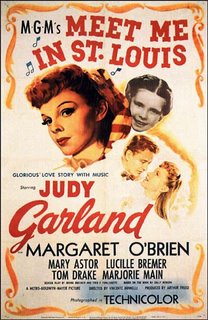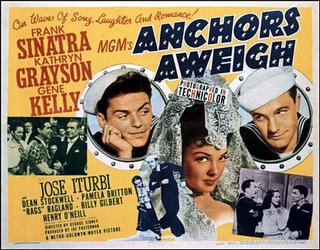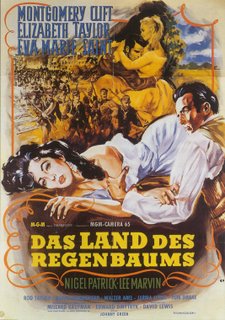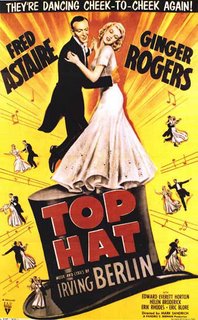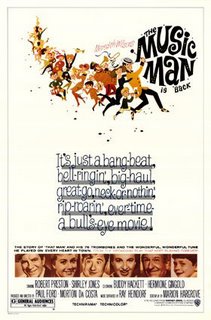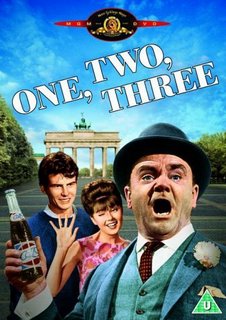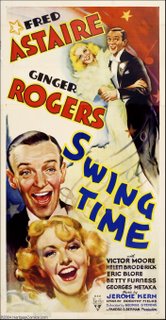Life With Father
 There are many famous snubs throughout the nearly 80 year history of the Academy Awards. Some are more famous than others, such as Henry Fonda losing for "The Grapes of Wrath", or more recently "Shakespeare in Love" beating "Saving Private Ryan". One injustice which has not been given much press, but I feel is just as glaring, is William Powell losing Best Actor in 1947 for "Life With Father". Based on the Howard Lindsay play (itself based on the memoirs of Clarence Day, Jr., the oldest son character in the film) that ran on Broadway for years, "Life With Father" is an absolute tour de force by William Powell as Clarence Day Sr., an impossibly stubborn, but also extremely loving father and husband in late 19th century New York. One of Warner Bros. all star productions of the late 1940's, the film rivals any of MGM's Technicolor films of the time, given the same remarkable use of color, as well as incredibly detailed period appropriate sets by Warner's old reliable decorator Robert Haas. But all of this is secondary whenever William Powell is on screen. Powell dominates everyone around him, no easy feat considering the film provides him with a strong foil in the radiant Irene Dunne, as well as silent screen star Zasu Pitts in a nice supporting role and an impossibly gorgeous teenage Elizabeth Taylor (the only person in Hollywood history to be a super star as both a child, teenager, and adult). Clarence Day is a man whose life is built around routine, his fanatical obsession with order, punctuality and discipline, yet throughout the course of the movie you realize just how willing he is to compromise to please his wife and children, despite his stern exterior. Powell simply owns the role and frankly, losing Best Actor to Ronald Colman for "A Double Life", a long since forgotten noirish drama, is as great as injustice, given the juxtaposition of the two roles then, as well as their respective legacies now, as Marlon Brando losing for "A Streetcar Named Desire".
There are many famous snubs throughout the nearly 80 year history of the Academy Awards. Some are more famous than others, such as Henry Fonda losing for "The Grapes of Wrath", or more recently "Shakespeare in Love" beating "Saving Private Ryan". One injustice which has not been given much press, but I feel is just as glaring, is William Powell losing Best Actor in 1947 for "Life With Father". Based on the Howard Lindsay play (itself based on the memoirs of Clarence Day, Jr., the oldest son character in the film) that ran on Broadway for years, "Life With Father" is an absolute tour de force by William Powell as Clarence Day Sr., an impossibly stubborn, but also extremely loving father and husband in late 19th century New York. One of Warner Bros. all star productions of the late 1940's, the film rivals any of MGM's Technicolor films of the time, given the same remarkable use of color, as well as incredibly detailed period appropriate sets by Warner's old reliable decorator Robert Haas. But all of this is secondary whenever William Powell is on screen. Powell dominates everyone around him, no easy feat considering the film provides him with a strong foil in the radiant Irene Dunne, as well as silent screen star Zasu Pitts in a nice supporting role and an impossibly gorgeous teenage Elizabeth Taylor (the only person in Hollywood history to be a super star as both a child, teenager, and adult). Clarence Day is a man whose life is built around routine, his fanatical obsession with order, punctuality and discipline, yet throughout the course of the movie you realize just how willing he is to compromise to please his wife and children, despite his stern exterior. Powell simply owns the role and frankly, losing Best Actor to Ronald Colman for "A Double Life", a long since forgotten noirish drama, is as great as injustice, given the juxtaposition of the two roles then, as well as their respective legacies now, as Marlon Brando losing for "A Streetcar Named Desire".Directed by Michael Curtiz, the man responsible for virtually every Warners classic of the 1930's and 1940's (Captain Blood, The Adventures of Robin Hood, Casablanca, Mildred Pierce, the list goes on and on), the film was a guarenteed box office smash given its popular source material (see, nothing has changed in Hollywood). Still, notorious fiddler Jack Warner took no chances, securing his top director, his top decorator, an all star cast and Max Steiner, one of the most talented composers of the classical Hollywood era. It should then come as no surprise that Powell, Haas, and Steiner all received Oscar nominations, as did the film's color cinematography. Beginning with the credits over stereopticon slides of turn of the century New York, we are introduced to the world according to one man, Clarence Day. He doesn't appear on screen for about the first 20 minutes, but his presence is definitely felt, as every character is bustling about desperately trying to please him. The film does not really have a narrative arc, so much as Powell's character does. Sure things happen, such as his wife's Vinnie constantly trying to circumvent his tight fisted ways. Some memorable vignettes are Vinnie trying to convince him to take a carriage to Delmonico's or to keep an antique pug dog she bought on impulse (a hilarious running gag throughout the film, Clarence cannot stand his wife's impulsive spending, usually because it results in something as grostesque as the pug dog). There is also the small matter of Vinnie's cousin Cora coming to visit and her teenage guest, Mary Skinner (Clarence also cannot stand relatives imposing and several of the film's greatest lines come from him verbally expressing this pet peeve). Another problem is Clarence's youngest son Clarence Jr. who is plauged both by trying to impress his impossible father as well as the aforementioned impossibly gorgeous Mary Skinner. And finally, there is the small fact of Clarence's never having been baptized, which becomes significant when Vinnie has an unfortunate brush with death after consuming some of younger son Harlan's cheap elixir, which he is selling to make his industrious father proud of course.
Watching Clarence barrel through each of these problems is equally hilarious and touching. He is stern but caring with his children, short but polite to his relatives, and exasperated but always loving to his wife. We see the real man, buried underneath layers of structure and etiquette, when the reverend comes to their house to pray for the damned soul of Vinnie. Clarence considers this affront from God and demands(!) that God leave his poor wife alone. This scene sums up Clarence Day: a man who refuses to budge when it comes to his family, specifically his wife, even if it means challenging God himself. After Vinnie recovers, she implores Clarence to get baptized, something which he has steadfastly refused to do thus far, reasoning that God "can't keep him out of heaven on a technicality", but eventually agrees to, even letting Vinnie book them a carriage to the church for the special occasion. By the end of the film we realize Clarence is hardly the tyrant he appears to be. His brusque manner and biting wit are merely ways he burns off steam, after all, trying to appease a wife and four children is taxing. He even does not mind cousin Cora and Mary staying with them, after he launched a tirade against it earlier ("that is what hotels are for!"), he mellows. Vinnie's sickness shook him, and he realized that perhaps lightening up a little would do everyone a bit of good. This change, from domineering patriarch to agreeable family man, is expertly realized by Powell's larger than life portrayal. Powell's trademark comic timing and equisite line delivery serve him well in his early scenes, but it is truly a testament to his fine acting that we come to care for Clarence by the film's end. He makes his character's change one the audience does not necessarily want. When he is cutting down house maids and relatives in the first half, we love it. However when he is imploring God to spare his wife's soul, we realize this is the man we really want him to be, keeping that fire and brimstone tone, but harnessing it. Based on the incredible true life of Clarence Day Jr. (his father must really have been some man, even with some poetic license taken), "Life With Father" is a wonderful film, featuring one of the greatest actors of all time in his best (not signature, but he plays Clarnece Day better than Nick Charles) role.

